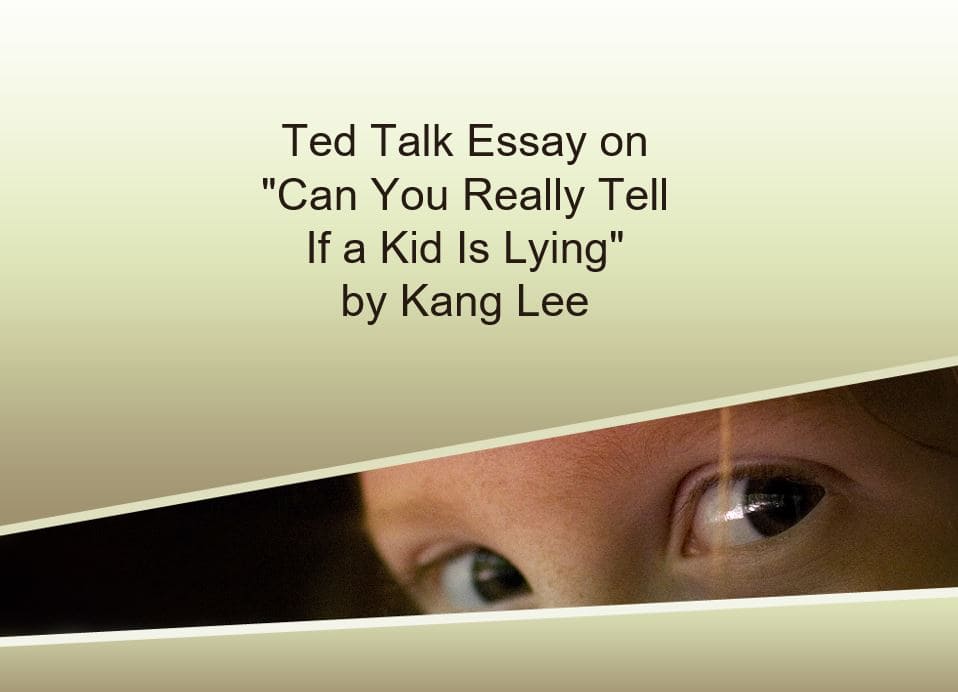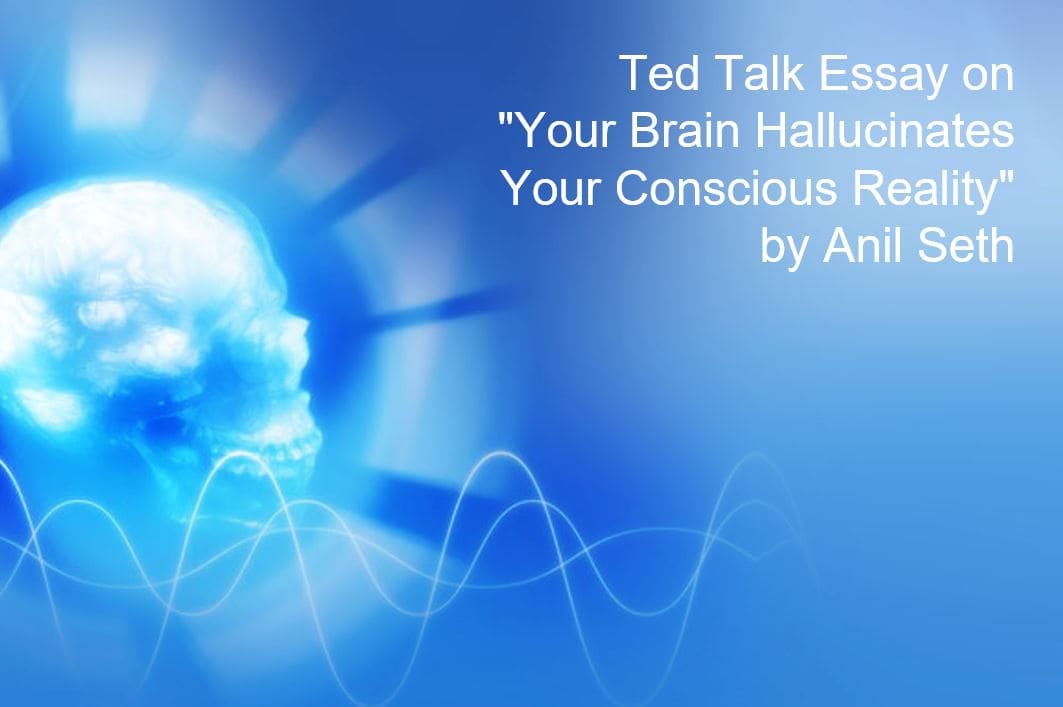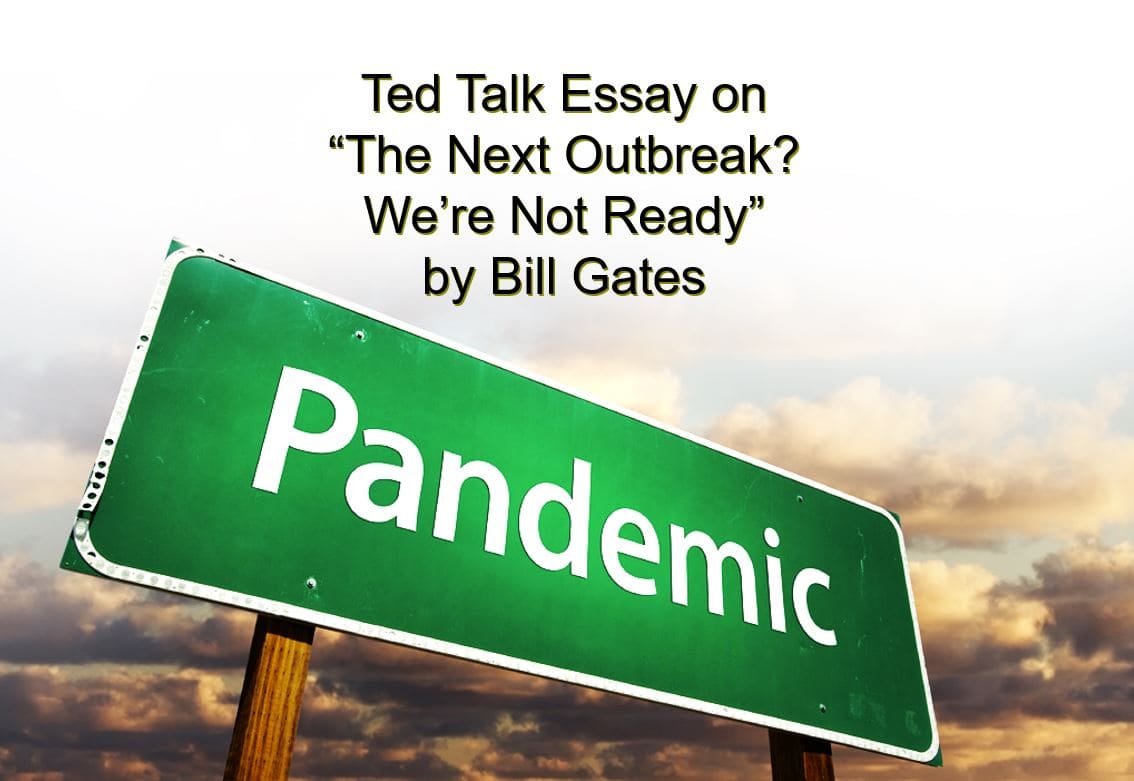In this Ted Talk essay on “Can You Really Tell If a Kid Is Lying” by Kang Lee, lying is considered to be part of human social interaction. For over 20 years, Kang Lee, a professor at the University of Toronto, has studied how people begin and learn to lie at a very young age. Based on research, Lee gives a sensational talk about lying as part of normal social development that people can all relate to their social experiences and reveals an interesting way in which technology can detect when a person is lying to help in fields where lie detection is vital.
The Main Theme
Foremost, Lee suggests that people begin to lie at a very young age, and as they grow, they continue learning the art until they become sophisticated liars. At the age of two years, approximately 30 percent of children are likely to lie, and, when they reach five years, most children will lie (Lee 2:50-3:20). The study shows that lying is a normal part of human development, and that is why adults become great liars. Lying is something that is learned over time, and there are several motivations why people lie, while they want to avoid trouble, protect the feeling of others, and even preserve self-image, but lying can never be justified.

Human Experience
Lee’s talk about lie detection makes people relate to lies that they experience daily in their social interactions. Beginning at a very young age, people will always lie in their everyday interactions such that it would be difficult to detect when adults lie (Eskritt and Lee 1). In daily interactions with workmates, family, or children, people may not be honest, and others also lie to them, while all of them may not notice it. People cannot accurately tell when colleagues or children lie to them, suggesting that there is still much work to develop more efficient tools and ways to help humans to detect lies.
Importance
The talk is particularly important because it makes people think how difficult it is to detect that children or other individuals they associate with are not honest. Over time, children learn to lie, while dishonesty may impact social etiquette, and parents are expected to helps their children to learn to be honest most of the time (Gonser par. 1). To help children to learn a culture of honesty, parents should be able to detect when they try to lie and learn how to respond appropriately. Using childhood experiences and insights from research, it is possible to develop a culture of honesty in children and even in everyday adult social interactions.
Applying the Information
Fortunately, Lee shows that there is a breakthrough in lie detection, and people are able to use technological tools to tell when someone tries to lie. For example, technology is now being used to create tools, including magnetic resonance imaging that measures physiological responses and people’s hidden emotions on their faces to detect lies (Aldert 10). This technology will impact many fields, like policing and the justice department to prevent cases of false incarceration, positivelly. As a result, it will be a breakthrough in lie detection that would significantly help people to know someone lies in everyday social interactions.
Surprising Fact
The most surprising fact is that a video clip can be analyzed using technology to show whether or not someone is telling lies. For example, transdermal optical imaging can read hidden emotions that the eye cannot see (Lee 9:16-9:42). When people lie, they show a neutral facial expression where one cannot detect the guilt and fear behind the face. In turn, it is possible to look beyond the facial expression to reveal that people could be lying. Such tools, as transdermal optical imaging technology, are likely to improve lie detection.
Summing Up
To this end, Lee’s talk about lie detection reveals how technology has helped to develop a more accurate lie-detection tool. In this case, learning to lie is part of normal human social development that begins at a young age. After that, lies become part of people’s social interaction, and it is interesting that, for a long time, it was difficult to detect when people lied. Fortunately, technology has helped to develop lie detectors that can accurately detect lies both in children and adults.
Works Cited
Eskritt, Michelle, and Kang Lee. “The Detection of Prosocial Lying by Children.” Infant and Child Development, vol. 26, no. 1, 2016, pp. 1-17, doi:10.1002/icd.1969.
Gonser, Sarah. “Age-by-Age Guide to Lying.” Parents, 2021, www.parents.com/kids/development/behavioral/age-by-age-guide-to-lying/.
Lee, Kang. “Can You Really Tell If a Kid Is Lying?” TED, 2016, www.ted.com/talks/kang_lee_can_you_really_tell_if_a_kid_is_lying.
Vrij, Aldert. Detecting Lies and Deceit: Pitfalls and Opportunities, 2nd Edition. John Wiley & Sons, 2008.


